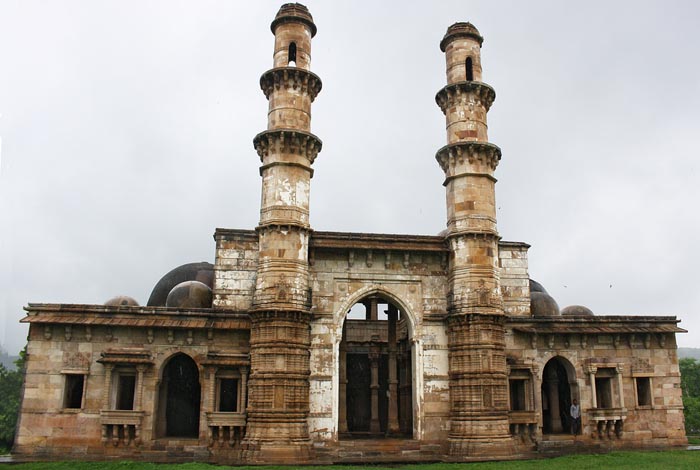Kevda Masjid

Information on Kevda Masjid (Panchmahal, Gujarat) - History & Architecture
Kevda Masjid which is also known as Kewda Masjid or Kevda Masjid is one of the important mosques in Gujarat. Situated in Champaner city of Gujarat, Kevda Masjid is regarded as a key portion of Champaner Pavagadh Archaeological Park. It is also observed as a holy site for Muslims as well as a heritage location of travellers. It is a 15th century construction which is made in accordance with Hindu and Muslim architectural format.
Kevda Masjid Religious Significance
Kevda Masjid is one of the popular attractions in Champaner city. It is even regarded as the largest monument for every Muslim devotees in the city. Considerable number of devotees visit the masjid in order to provide prayers to the god. The religious significance of Kevda Masjid has increased due to the belief that nature was incorporated in the creation of the mosque in such a way which is quite unusual in other religious places of Islamic world. Each year every popular Muslim fetsivals are conducted in this mosque. The masjid possesses towers, globe like vaults along with slender stairs. It is also considered as an architectural beauty for the visitors.
Kevda Masjid Mythology
Kevda Masjid was created throughout the reign of Mahmud Begada, who was a protruding ruler of Gujarat. He was the founder of Muzaffarid family as well as Ahmedabad city. Mahmud Begada was known to be quite religious person and thus during his supremacy, several mosques was created such as Shahar Ki, Nagina and Ek Minar among others. Kevda Masjid is also regarded as one of the creations of his period. However, on that time it was quite difficult to reach to these mosques due to low level of transportation. Later two popular writers named James Burgess and Henry Cousens wrote descriptions regarding the popular mosques in Champaner Pavagadh Archaeological Park. Afterwards roads were constructed for reaching them including Kevda Masjid. Among other mosques, Kevda Masjid is noteworthy since it is a great tomb. In the west side of Kevda Masjid, there is another mosque named Kathra Masjid, but it has less religious significance than Kevda Masjid.
Kevda Masjid Architectural Significance
Kevda Masjid has many walls which are complicatedly carved. The mosque is rectangular in shape, which have a grooved central vault and four angle vaults. The outline of Kevda Masjid looks like a four-sided floral with geometrical design. The internal pillars of the mosque is quite attractive. The prayer gallery of Kevda Masjid is a double storeyed building with three vaults, however, the central vault has wiped out with time. The windows of the mosque have terraces which is created over large columns with complicated engraved decoration. There are two towers in Kevda Masjid, which are also designed with intricate figurines. During the period of 1890s, various restoration activities were undertaken in the mosque.
In the year 2006, additional restoration works are done to Kevda Masjid by the Archaeological Survey of India (ASI). Apart from that the nearby masjids in Champaner Pavagadh Archaeological Park have also gone through vast restoration. As a consequence, in recent years, number of visitors to the mosque has increased considerably. Significant amount of money has been spent by ASI in order to conserve the religious site and also to develop it. Hence, not only Kevada Masjid has become a popular religious place, but also a place for national importance in Gujarat.
The well organised and well planned Masjid is well known and highly appreciated for being an important landmark of the state, Gujarat.